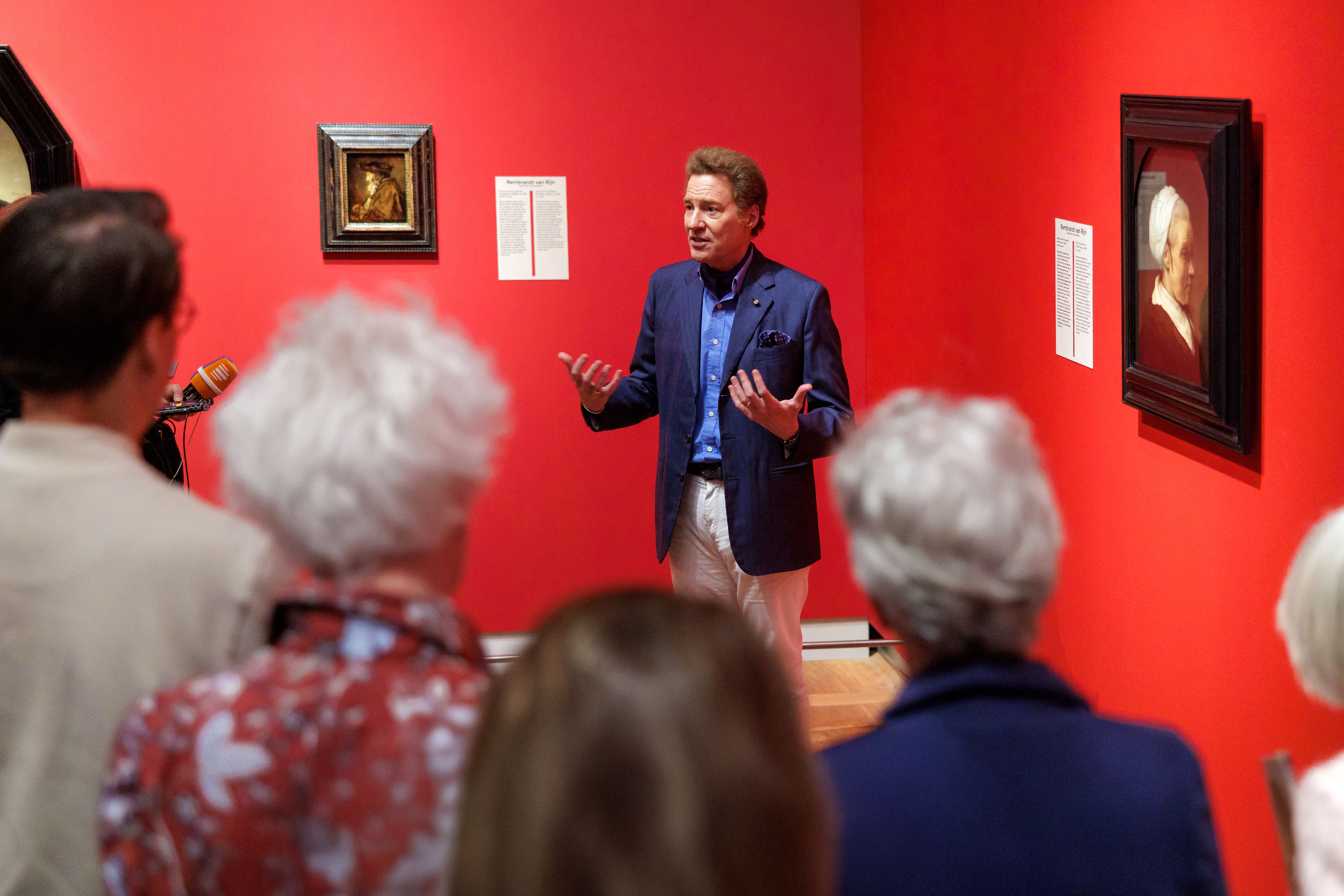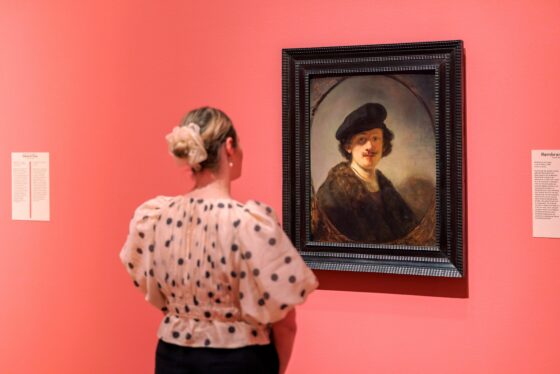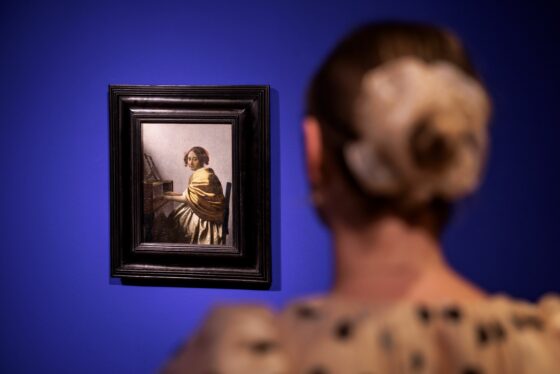The original Dutch celebrity: 18 Rembrandts on show in Amsterdam
Senay Boztas
Rembrandt did not like his legs. This is one of the more surprising revelations from a tour around an extraordinary loan of 18 Rembrandts and 57 other 17th century Dutch masterpieces.
The exhibition From Rembrandt to Vermeer, Masterpieces from The Leiden Collection, offers visitors to H’Art Museum in Amsterdam a vivid dive into the art and world of the Netherlands four centuries ago.
Standing before student Isaac de Jourderville’s portrait of Rembrandt in oriental dress, the Leiden Collection’s owner Thomas S. Kaplan revealed his theory that the famous artist was sensitive about his legs. Although his student pictured them here, in a self-portrait Rembrandt did in the same pose, they vanished.
“Later on, Rembrandt seems to have determined he didn’t like the look of his legs, and the original self-portrait, which is now in the Petit Palais in Paris, is over-painted with a poodle,” said Kaplan, guiding a press tour around the paintings. “There are no full-length portraits by Rembrandt of himself. This is the closest thing to it, and it makes for a very, very interesting document.”
At that time, around 1631, Rembrandt van Rijn had moved from Leiden to Amsterdam, had a flourishing studio and was not just a successful artist: he was a 17th century Dutch celebrity. “Of course, Rembrandt painted probably more self-portraits than any other artist,” said Kaplan. “It’s not because he was an egomaniac. It’s because he was a celebrity, and his portraits sold well.
“If you had a self-portrait of Rembrandt on your wall, it was as iconic to someone from the Netherlands as having an Andy Warhol Campbell soup pan, or a Cy Twombly. You just knew it immediately, and it was a sign you’d made it…
“Rembrandt always used to have a self-portrait to pull out, to show clients what they were going to get if he was going to get the permission to do their portrait. Very often they said, “That’s fine, but we’ll take the self-portrait as well!”

Mounted on candy-coloured walls, the exhibition explores themes of Amsterdam’s daily life, the Dutch elite, the impact of trade but also art as an indicator of the morals and manners of the time.
The first room of Rembrandts features the precious metals magnate’s first acquisition by the artist, Study of a Woman in a White Cap. “You always remember your first,” he quipped. “When I walked into this room for the first time yesterday, my first reaction was not particularly profound or insightful or memorable: it was, ‘This is a lot of Rembrandts!’ And the truth is that each one of them would be considered to be the capstone of a collection of Old Masters.”
In his eyes, the key to the artist’s mastery is not just his skill and free brushstroke but his emotional impact. Looking around the room at a preliminary study, Head of a Girl, Kaplan summed up: “This is emblematic of the kind of portrait that Rembrandt made that truly touches you, touches the soul. His ability to be able to capture inner life, his ability to be able to capture thought, still endures today as among the greatest of any artist in history.”

The show, which also includes Vermeer’s exquisitely-restored A Young Woman Seated at a Virginal, contains one highlight that will soon disappear. After the exhibition, Kaplan plans to auction Rembrandt’s sketch, Young Lion Resting, in order to raise money for wildlife conservation. Other works among the 75 on show include masterpieces by Jan Steen, Jan Lievens, Gerrit Dou, Frans van Mieris and Frans Hals.
Annabelle Birnie, general director of H’ART Museum, said the project had been in the planning for several years, since it broke from Russia and became an independent institution.
“Two years ago, during our first joint project, the idea was born to bring all the Rembrandts from this remarkable collection to the Dutch capital in celebration of Amsterdam’s 750th anniversary,” she said. “It is thanks to this special partnership [with The Leiden Collection] that we are able to share these masterpieces with the city and the Netherlands.”
Looking around the rooms, Kaplan said the seeds of impressionists, expressionists, even contemporary artists like Cy Twombly and Jennifer Saville, were all to be found in the extraordinary creativity of this Dutch period.
But, for him, Rembrandt is king, for the way he channelled people in all of their colour and emotion onto a canvas. “The power, the inner life, the way that Rembrandt conveys the strength of women is extraordinary,” he said. “Whether it’s the dignity of the woman in the white cap, the housekeeper, all the way through to his portraiture. The point was to make enough money to be able to do what he really wanted to do.”
And even though the artist fell from fashion, refused to move with the times, followed his own vision and died penniless, he is more of a celebrity today than he ever was. “It doesn’t take a genius to buy Rembrandt,” said Kaplan. “It takes a genius to be Rembrandt.”
The exhibition runs from April 9 until August 24, 2025
Thank you for donating to DutchNews.nl.
We could not provide the Dutch News service, and keep it free of charge, without the generous support of our readers. Your donations allow us to report on issues you tell us matter, and provide you with a summary of the most important Dutch news each day.
Make a donation